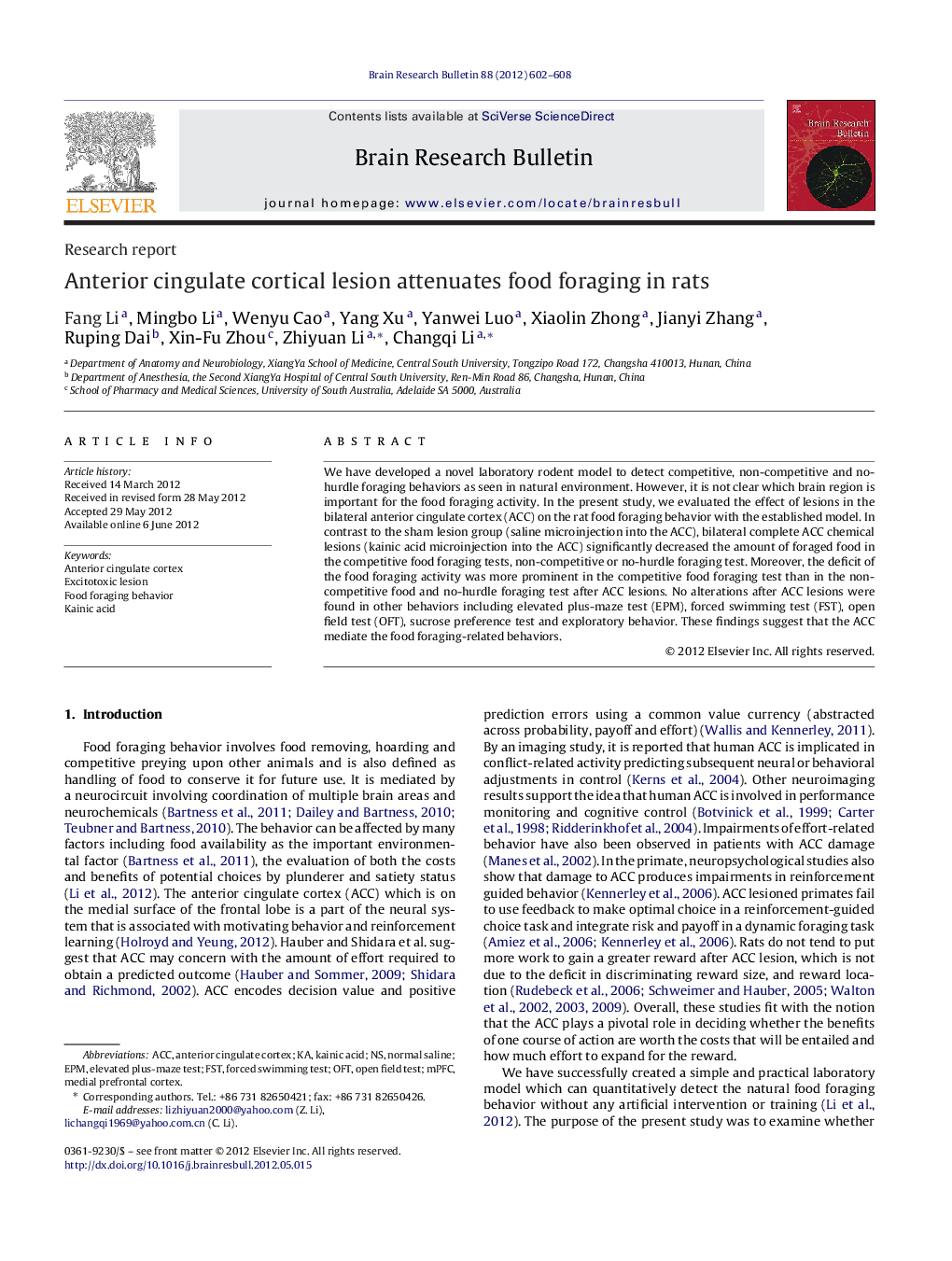| Article ID | Journal | Published Year | Pages | File Type |
|---|---|---|---|---|
| 6262002 | Brain Research Bulletin | 2012 | 7 Pages |
We have developed a novel laboratory rodent model to detect competitive, non-competitive and no-hurdle foraging behaviors as seen in natural environment. However, it is not clear which brain region is important for the food foraging activity. In the present study, we evaluated the effect of lesions in the bilateral anterior cingulate cortex (ACC) on the rat food foraging behavior with the established model. In contrast to the sham lesion group (saline microinjection into the ACC), bilateral complete ACC chemical lesions (kainic acid microinjection into the ACC) significantly decreased the amount of foraged food in the competitive food foraging tests, non-competitive or no-hurdle foraging test. Moreover, the deficit of the food foraging activity was more prominent in the competitive food foraging test than in the non-competitive food and no-hurdle foraging test after ACC lesions. No alterations after ACC lesions were found in other behaviors including elevated plus-maze test (EPM), forced swimming test (FST), open field test (OFT), sucrose preference test and exploratory behavior. These findings suggest that the ACC mediate the food foraging-related behaviors.
⺠ACC lesions decrease the amount of foraged food in the three food foraging paradigms. ⺠The deficit of the food foraging activity is more prominent in the competitive food foraging test. ⺠No significant alterations were found in mood-related behavioral tasks after ACC lesions. ⺠ACC is important in the food foraging paradigm associated with an effort-related event.
